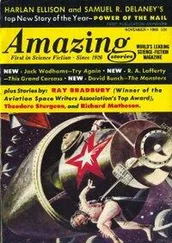There was a downside to animal domestication. Domesticated animals could be the source of human disease. As human populations settled down, they created heaps of waste—middens of animal bones, garbage, and feces. These served as the breeding grounds for and a source of microparasites; they also attracted insects that could act as vectors of disease, as well as wild birds and rodents carrying their own parasites and potential new sources of human disease. With each domesticated species of animal came the possible human exposure to new disease agents—parasites. For example, the numbers of diseases acquired from domestic animals (zoonotically) has been estimated to be: dogs, 65; cattle, 45; sheep and goats, 46; pigs, 42; horses, 35; rats, 32; and poultry, 26. Specifically, the human measles virus has its counterpart in the distemper virus of dogs and rinderpest in cattle. Smallpox has its closest relatives in the virus of cows and poxviruses in pigs and fowl, and human tuberculosis is a cousin of bovine tuberculosis. More recent examples of the “jump” from one animal species to another include HIV, in which a chimpanzee virus became humanized; monkey pox transmitted to humans by the bite of pet prairie dogs; SARS from civet cats; and Ebola from bats.
With the clearing of forests, the planting of crops, and destruction of wild game animals, new ecological niches were created for insects and scavenging rodents. Mosquitoes and flies that once fed on game animals now found a new source of blood: humans. These “bloodsuckers” could act as vectors for malaria, yellow fever, and African sleeping sickness. Ditches, irrigated fields, and pottery vessels could also serve as breeding grounds for insects and snails, facilitating the transmission of blood fluke disease, yellow fever, malaria, elephantiasis, and river blindness.
The crowd diseases of humans such as smallpox, measles, pertussis (whooping cough), tuberculosis, and influenza were initially derived from very similar ancestral infections of domesticated animals. At first those who hunted, farmed, and domesticated animals fell prey to the parasites they acquired, and some died, but in time resistance to these new diseases developed. When such a partially immune people came in contact with others who had had no such experience, a devastating epidemic could occur. It was these contagious diseases (caused by a wide variety of worms and “germs”) that would ultimately play a decisive role in the European conquests of native Americans, Africans, and Pacific Islanders; determine the outcomes of wars; loom large in the economic growth and prosperity of nations; and contribute to slavery and colonialism.
3
Six Plagues of Antiquity

Figure 3.1 Plague in an Ancient City (detail) circa 1652-1654 by Michiel Sweerts (1624-1664).
As humans changed their lifestyles, their relationship with infectious diseases came to be altered. For 2 million years these human populations consisted of small groups of hunter-gatherers with limited contact with other such groups, and there were no domesticated animals. Such a population structure, with little or no exposure to new sources of infection and where parasite survival and transmission were minimized, led to a situation in which epidemic diseases were virtually nonexistent. Indeed, only those diseases with very high transmission rates that induced little or no immunity, as well as macroparasitic diseases that did not involve vectors for transmission and sexually transmitted diseases, were able to establish themselves in the groups of hunter-gatherers. Although some vector-borne diseases, such as malaria and yellow fever, may have been present at this stage of human history, it was only after human populations settled down and adopted an agricultural life, or continued a nomadic existence that depended on the husbandry of large herds of animals, that conditions favored the emergence of epidemic diseases (plagues). Historically, plagues ( Fig. 3.1) came to be recorded only in our recent past, a time when we became farmers.
By 8000 B.C. the human population was settled in villages—first in the valleys of the Tigris and Euphrates Rivers in Mesopotamia and then along the Nile in Egypt, the Indus in India, and the Yellow River in China. Agriculture provided increased amounts of food for the people, but it also contributed to the conditions that would result in a decline in human health. It was the agricultural revolution, with the cultivation of crops and animal husbandry, that provided the driving force for the growth of cities (urbanization). Urban life also enhanced the transmission of certain diseases through the air and water; by direct contact; and by vectors such as snails, mosquitoes, and flies. The diseases of antiquity (5000 B.C. to A.D. 700) were characterized by parasites with long-lived transmission stages (e.g., eggs) as well as those involving person-to-person contact. Thus, most became established only when a persistent low level of infectious individuals could be maintained, i.e., were endemic; this required populations greater than a few hundred thousand.

Figure 3.2The blood fluke Schistosoma , causative agent of the Pharoah’s Plague. A. Hieroglyphic; B. Calcified egg from a mummy; C. Schistosoma haematobium egg as seen with light microscope; D. Schistosoma mansoni egg with miracidium inside; E. adults in copula, as seen with a scanning electron microscope (from David Halton); F. ciliated miracidium as seen with the scanning electron microscope (courtesy of Vaughan South-gate); and G. cercaria, as seen with a scanning electron microscope (from David Halton). mw, male worm; fw, female worm; gc, gynecophoric canal
A look back
The Assyrian and Babylonian literature, as well as the Egyptian papyrus from Kahun written in about 1900 B.C., describe a disease that causes blood to appear in the urine (hematuria). And near the Louvre Museum in Paris there is a stone from ancient Egypt that says, “Anyone who moves this boundary stone will be covered with bloody urine.” Hematuria was described by the father of Arabian medicine, Avicenna (930-1037), in his Canon of Medicine , but the condition, called a-a-a, was recognized much earlier and is mentioned in the Ebers papyrus, dated ~1500 B.C. and named after Georg Ebers, who in 1862 found the paper in a tomb in Thebes, Egypt. There is even a hieroglyphic sign showing a penis dripping fluid, and this too may be blood (Page 44). Such a sign was not considered to be connected with disease, but as a mark of puberty in the male child. Many remedies for this disease are described in the Ebers papyrus, suggesting that this condition was widespread. And in a relief of the tomb of Ptah-Hetep I and Mehou of the Sixth Dynasty at Sakarrah there are figures of fishermen and bargemen with enlarged abdomens—surely representing the pathology of chronic snail fever or blood fluke disease. In 1910, Marc Armand Ruffer examined several Egyptian mummies from the Twentieth Dynasty (1200-1000 B.C.) and found the calcified eggs of the blood fluke in the kidneys of several mummies ( Fig. 3.2B). Fossil snails capable of transmitting blood fluke disease have been found in the well water of Jericho. It has been hypothesized that the water was infested with infected snails, resulting in a high level of disease. Too debilitated by disease to defend the city or repair the decaying walls, the people of Jericho were easily defeated by Joshua’s army. Joshua, though unaware of the cause of the disease that contributed to his success, but wanting to prevent its spread, destroyed Jericho and proclaimed a curse on anyone who would rebuild it. The city remained deserted for 500 years. Centuries of recurring drought destroyed the snails, and thus the city has remained free of disease to this day. All this suggests that snail fever has existed in tropical and subtropical parts of the world, but especially in Egypt, since ancient times.
Читать дальше














